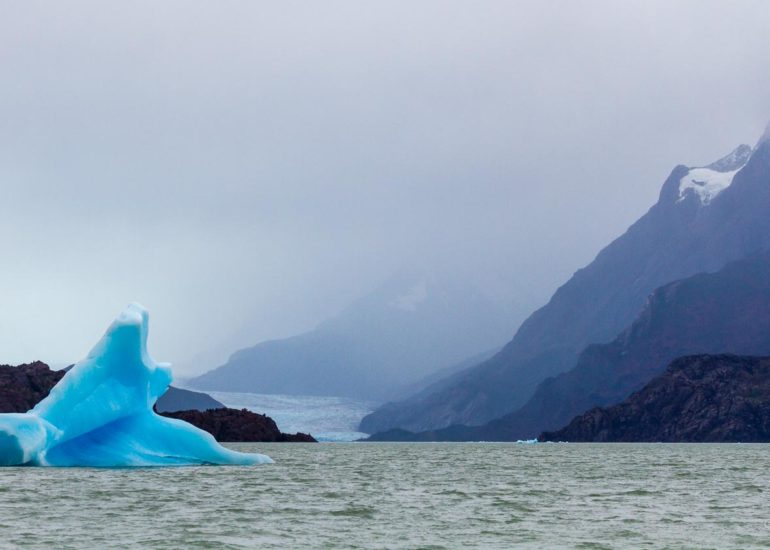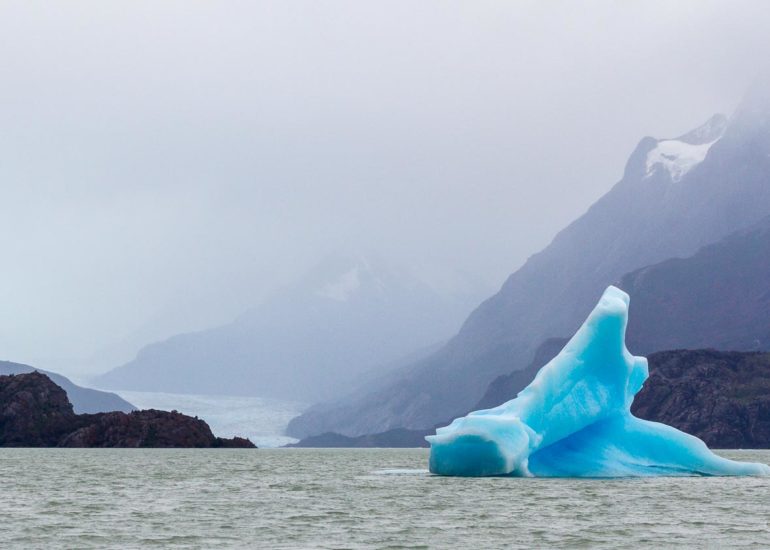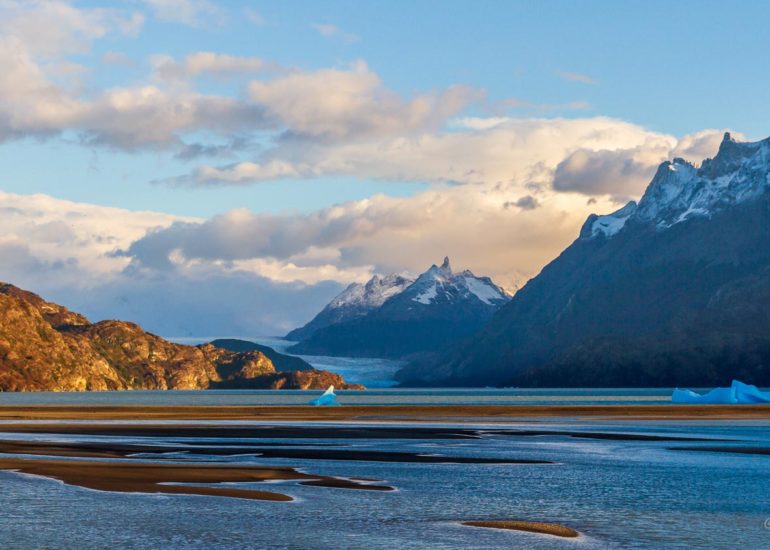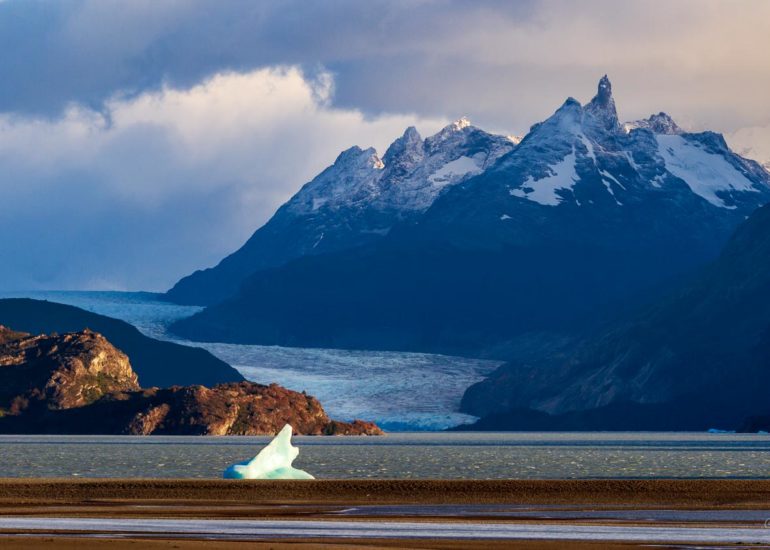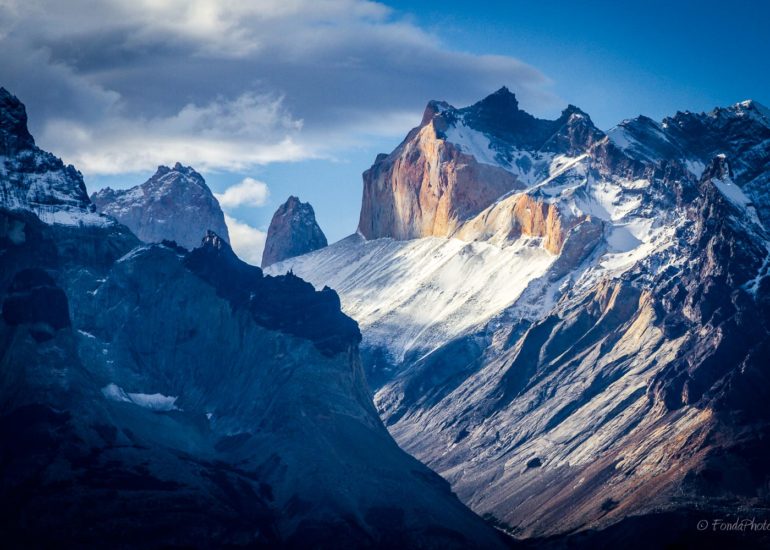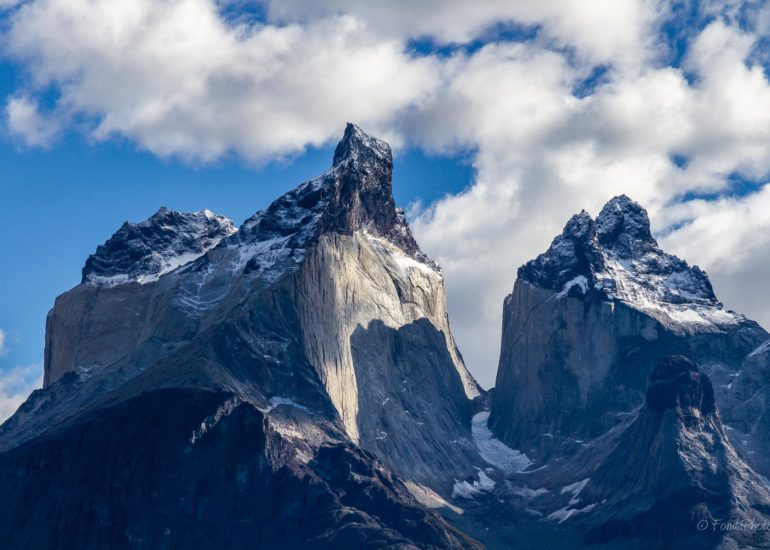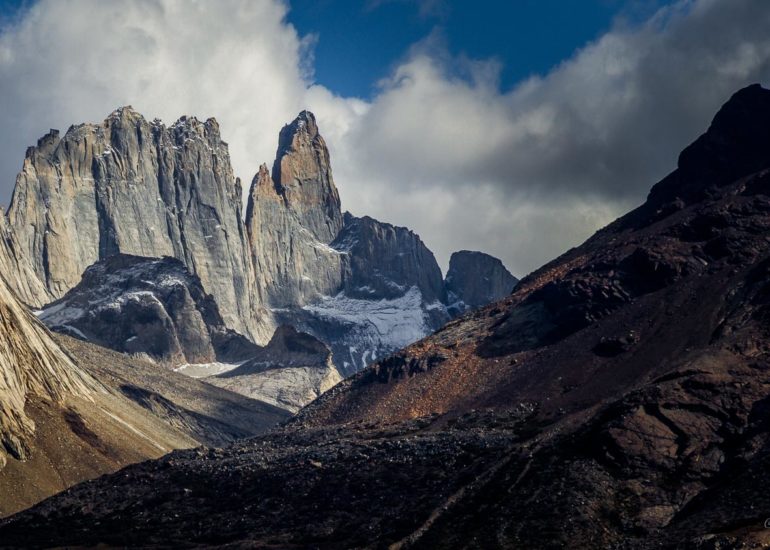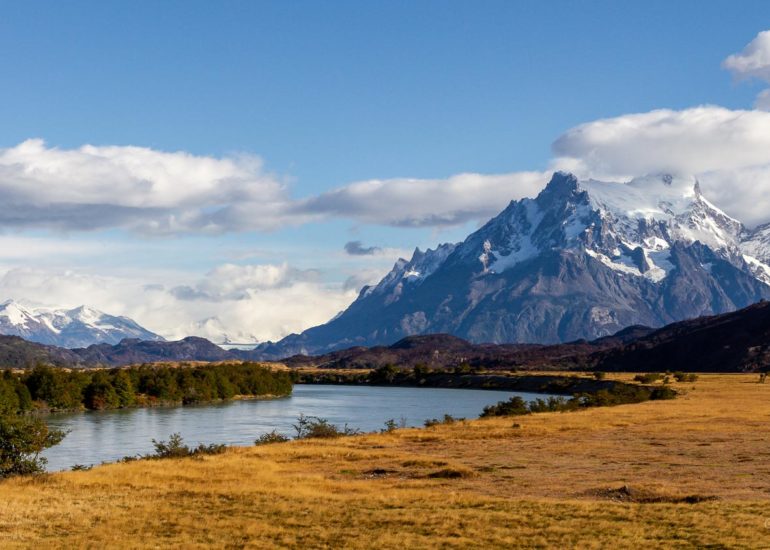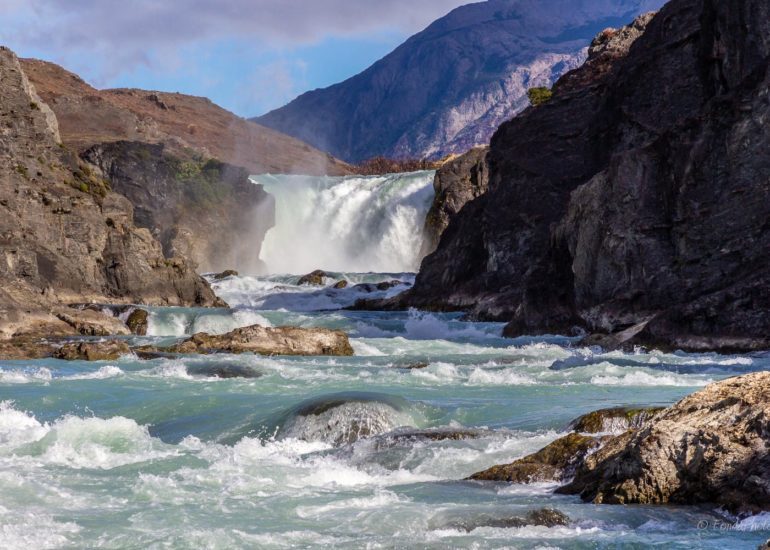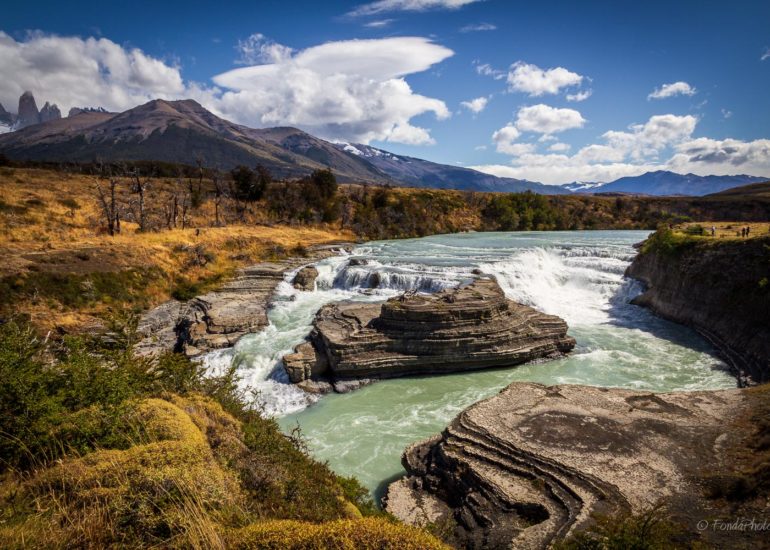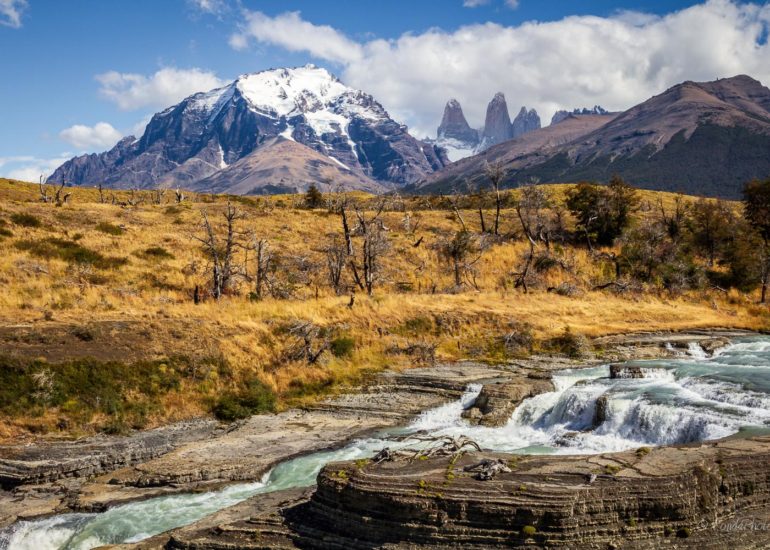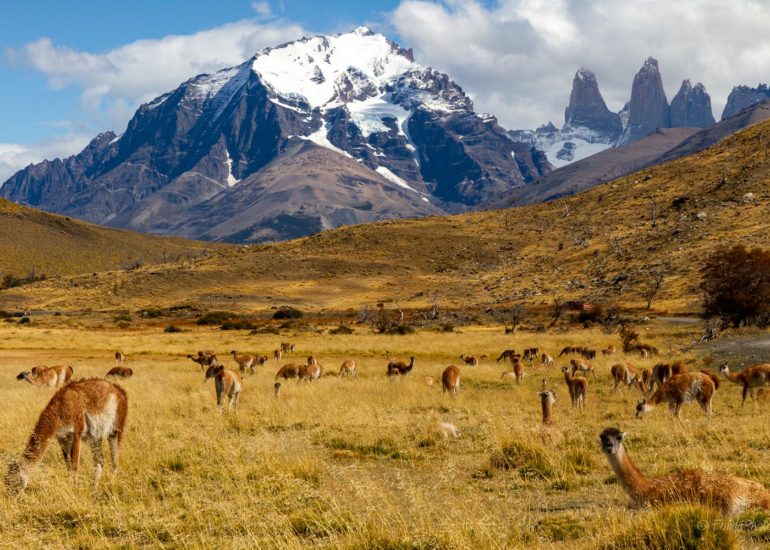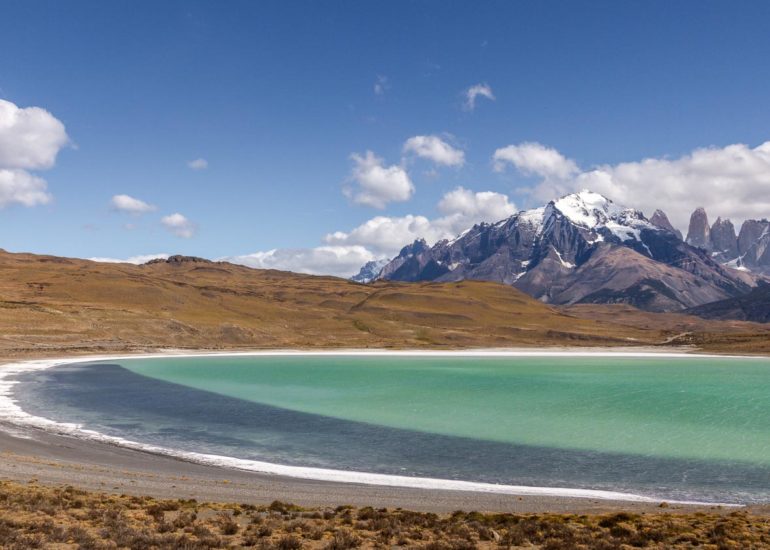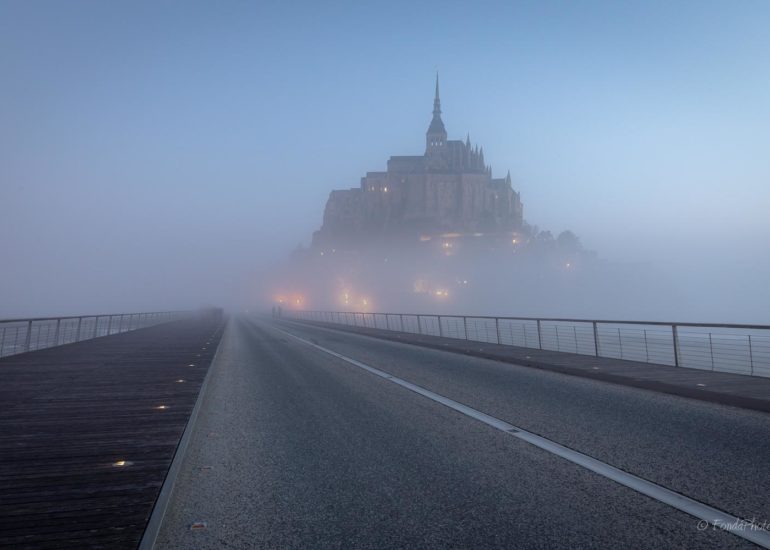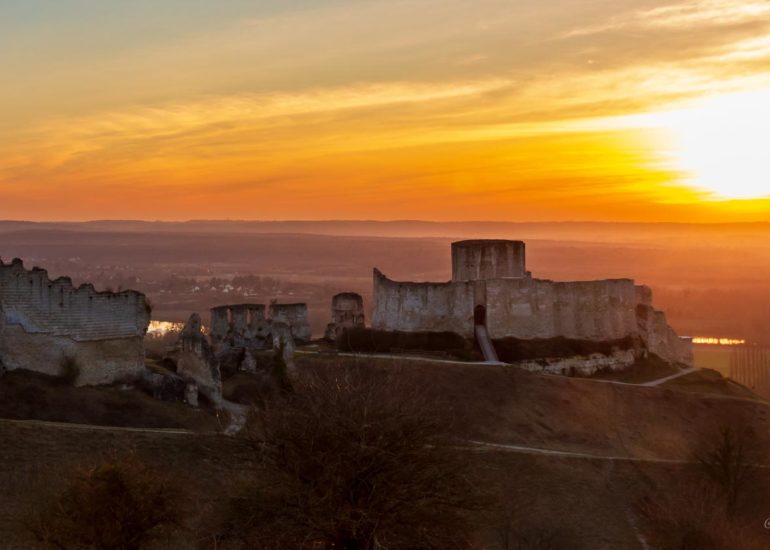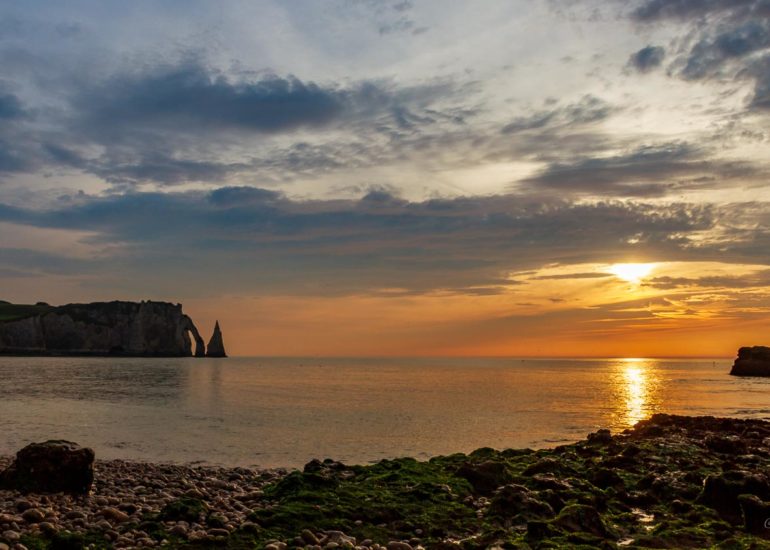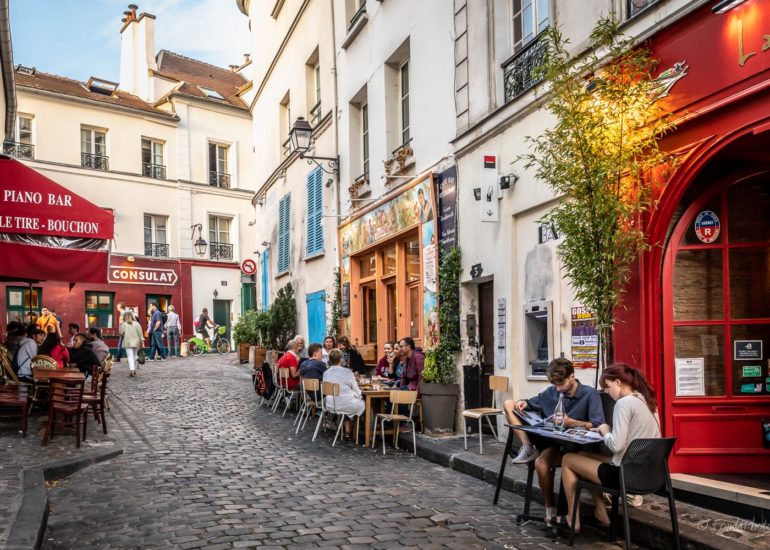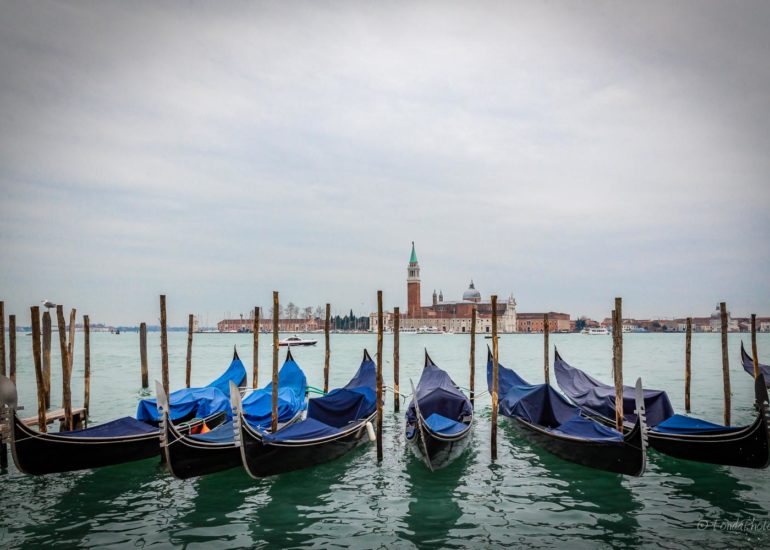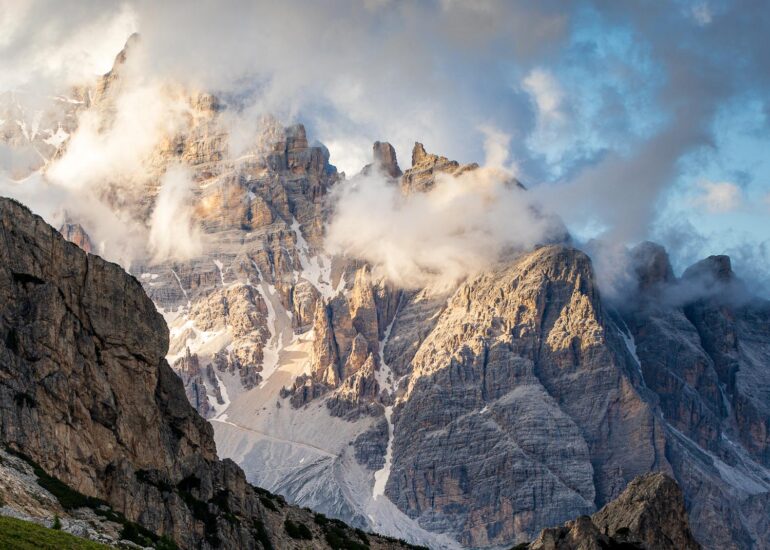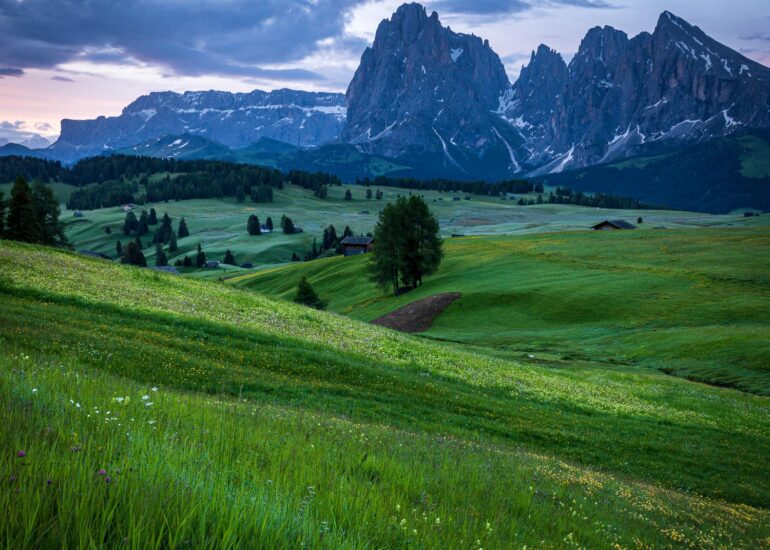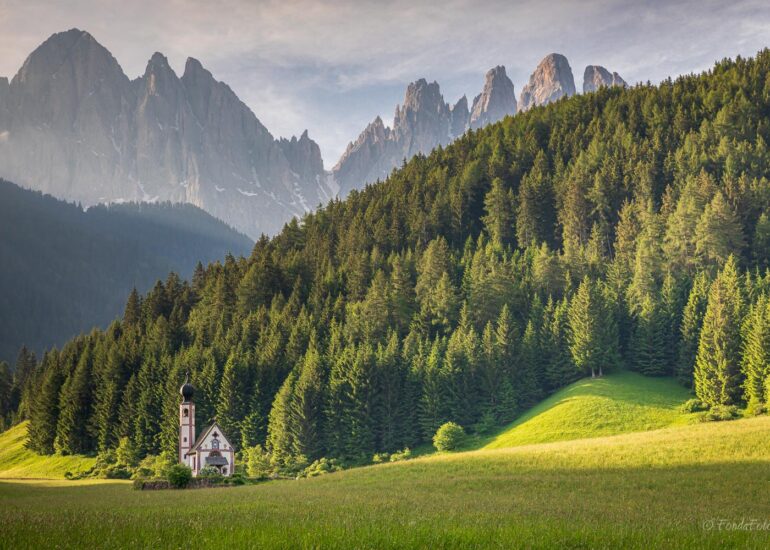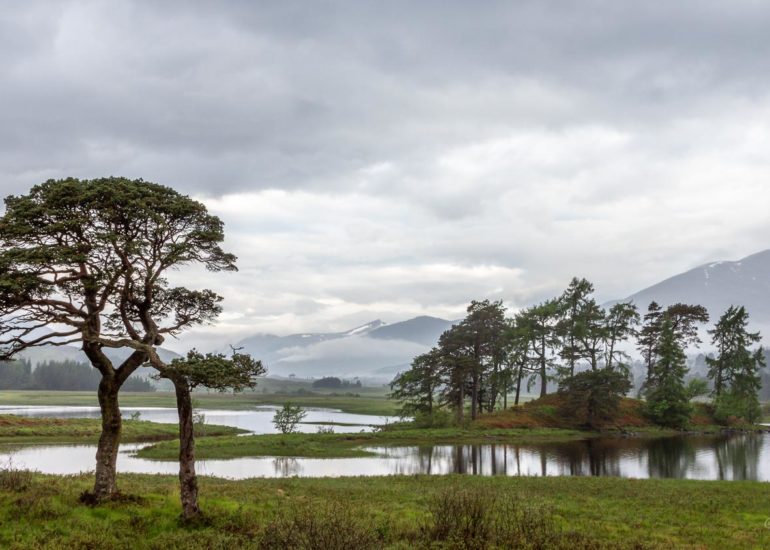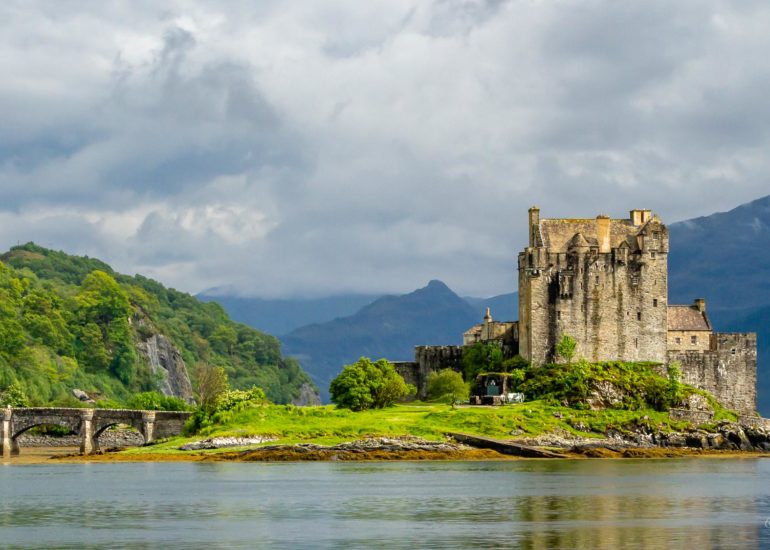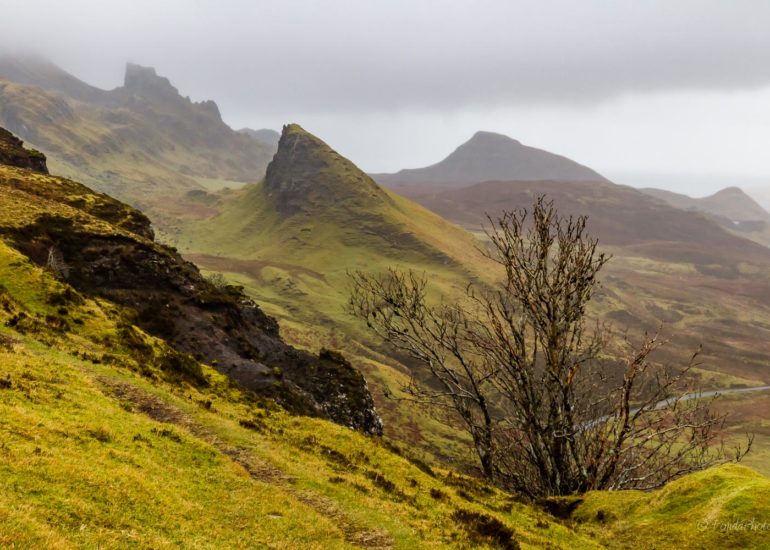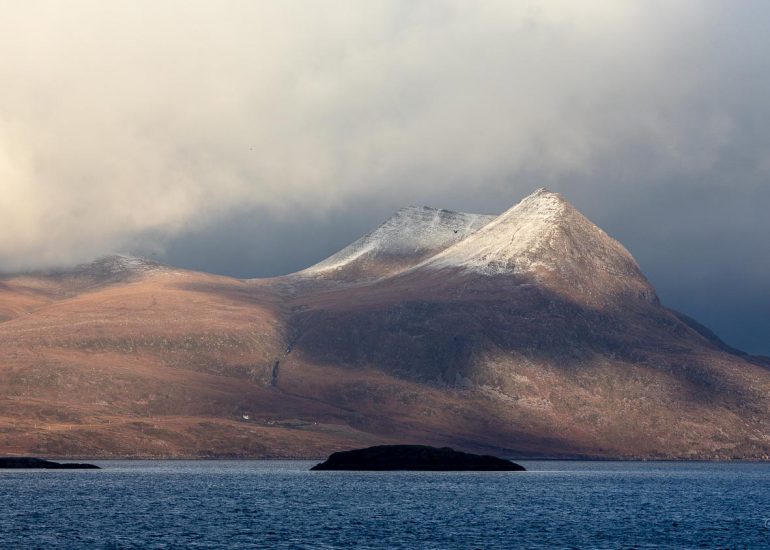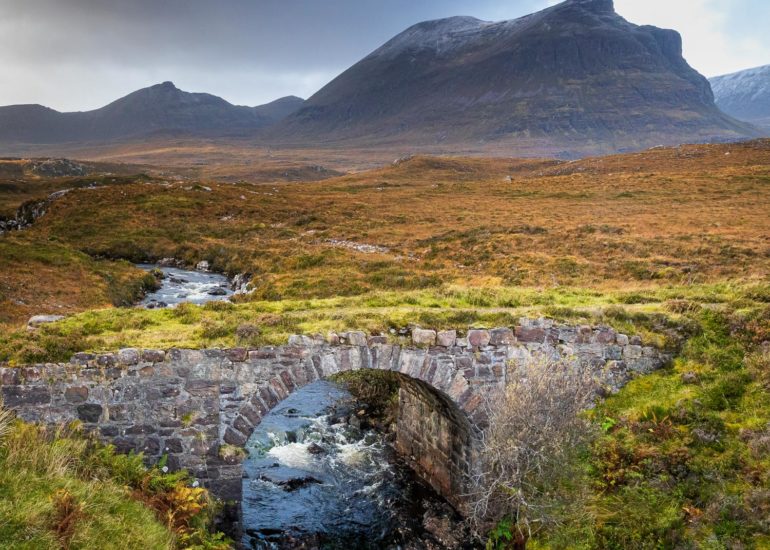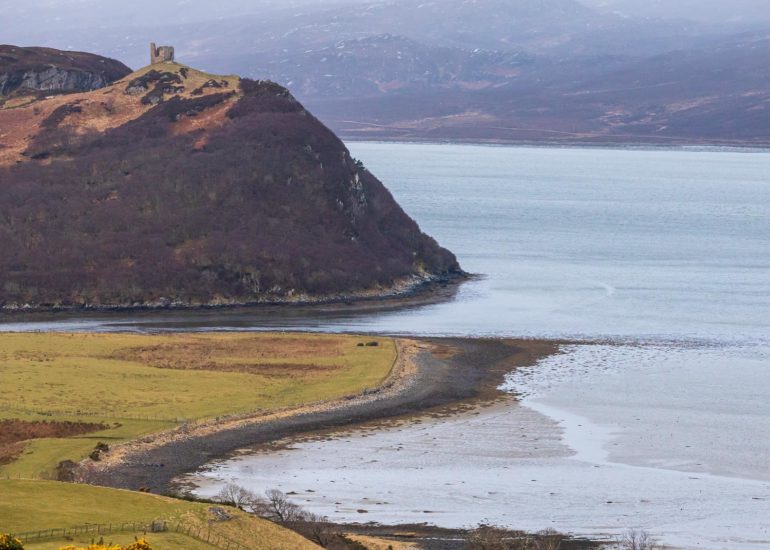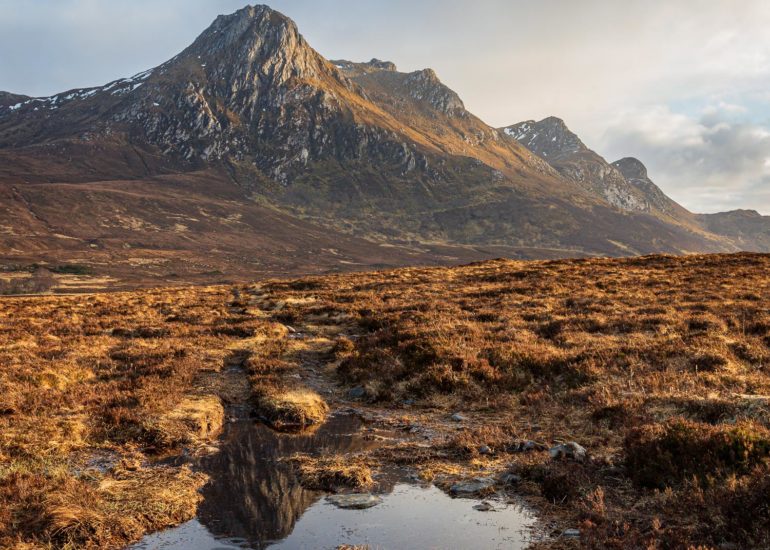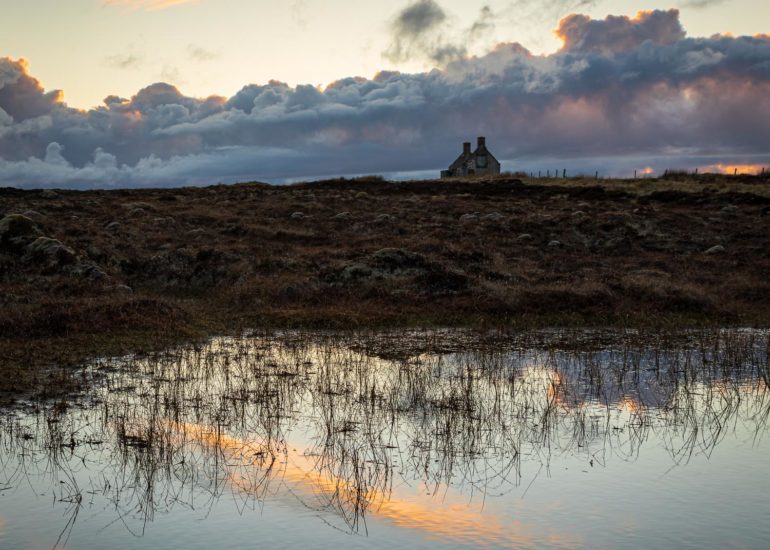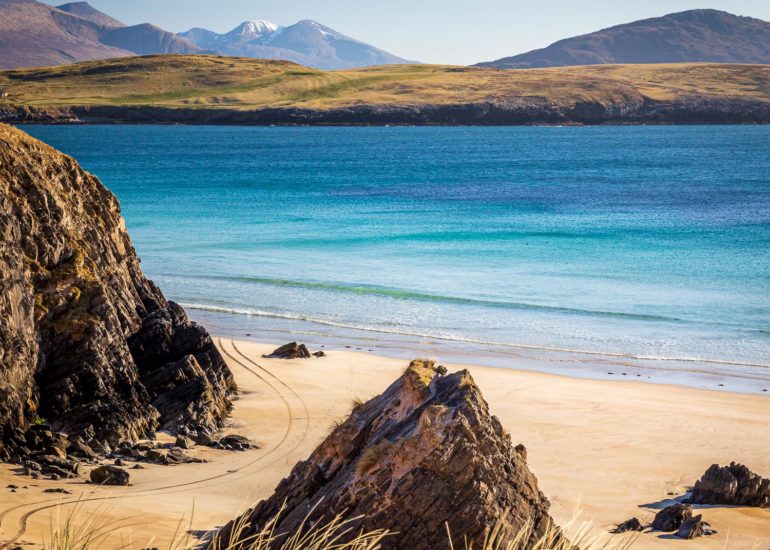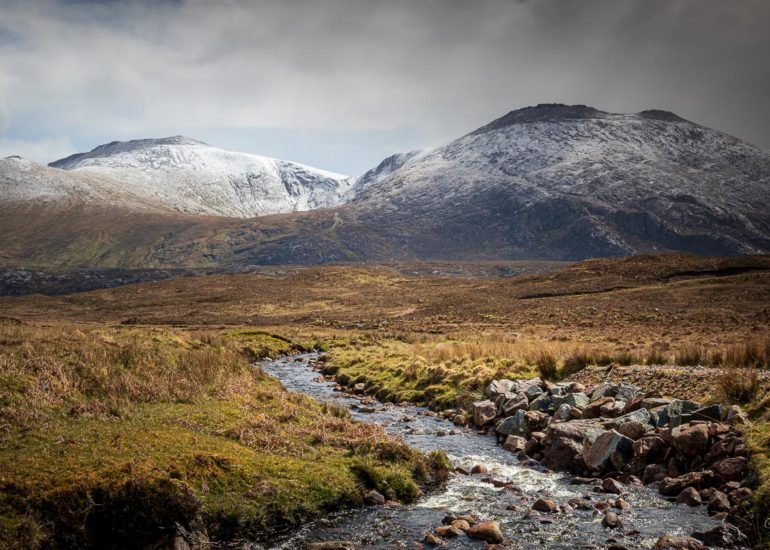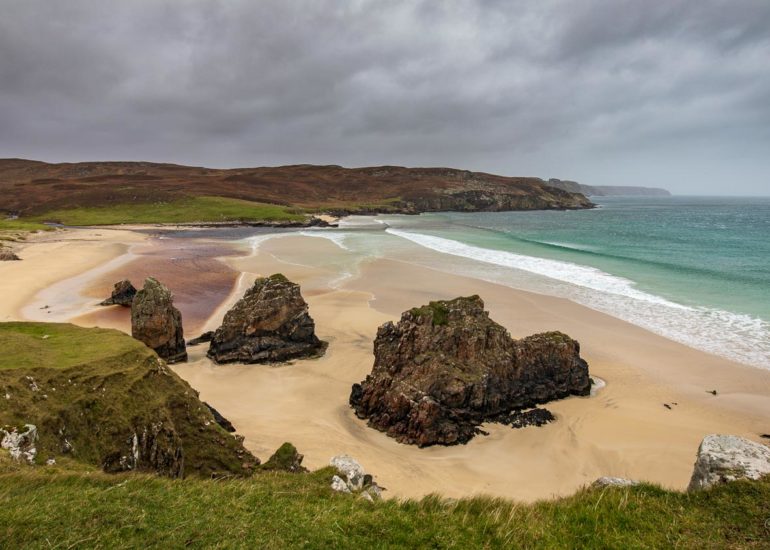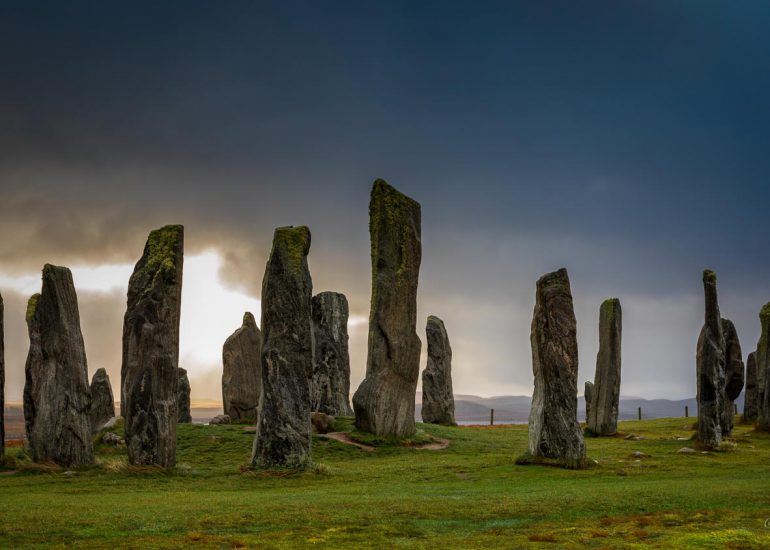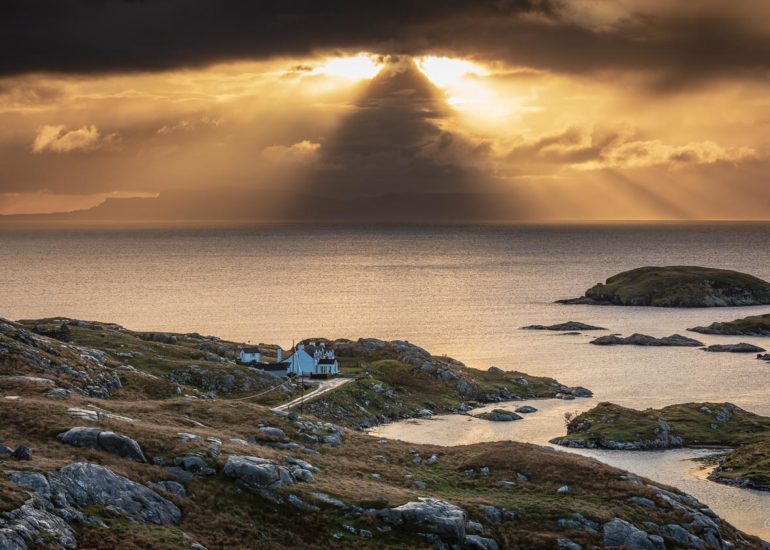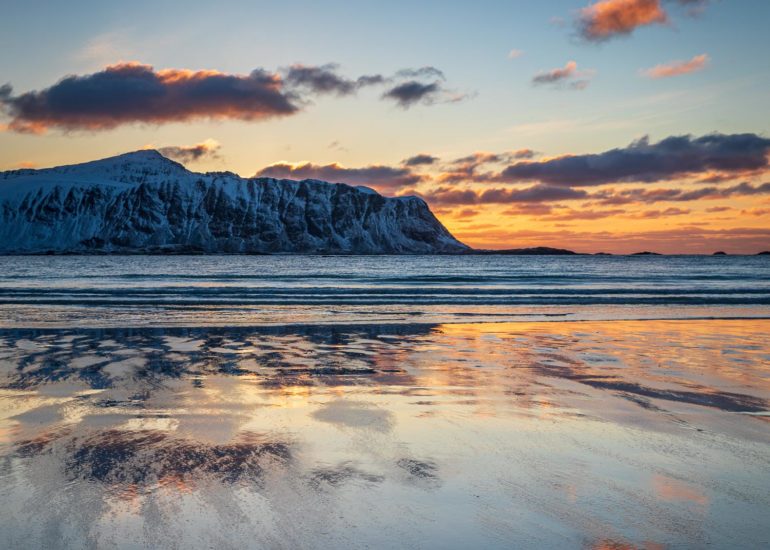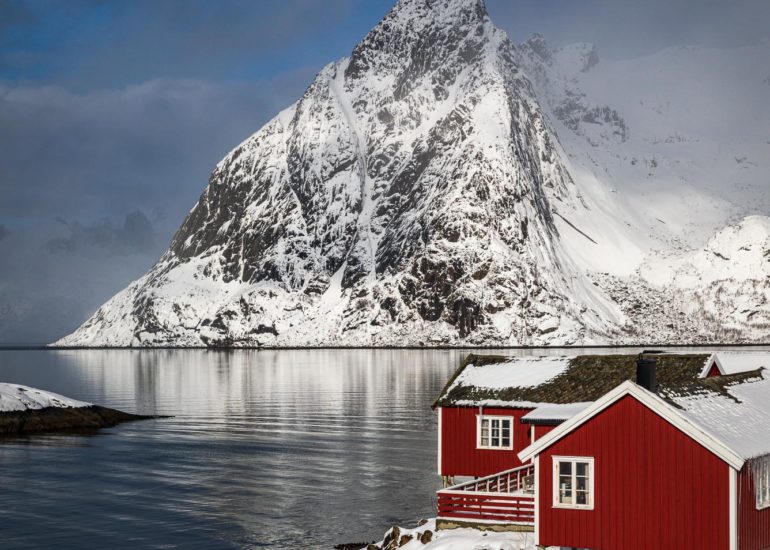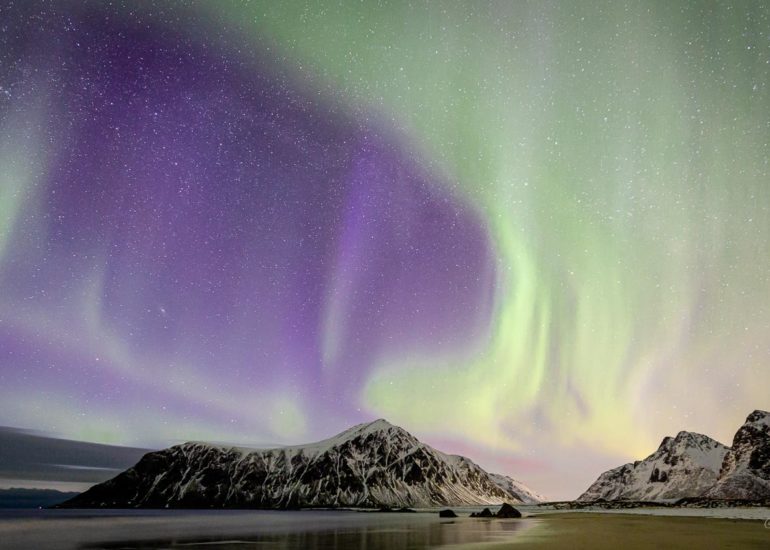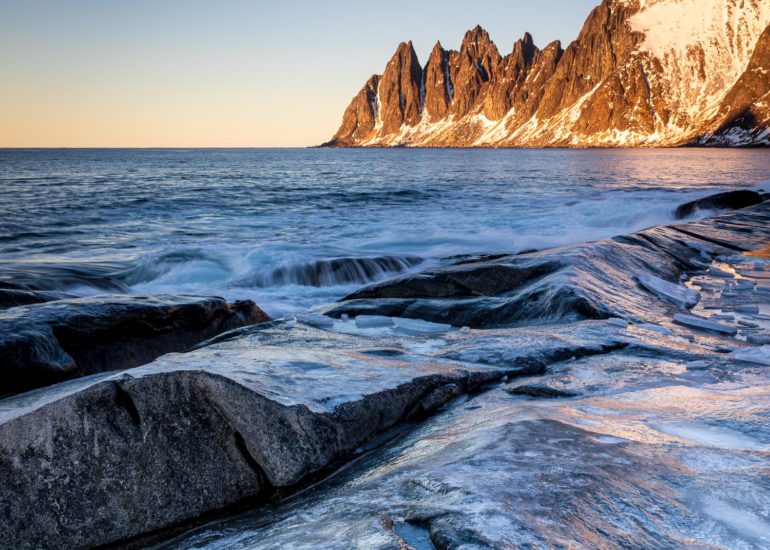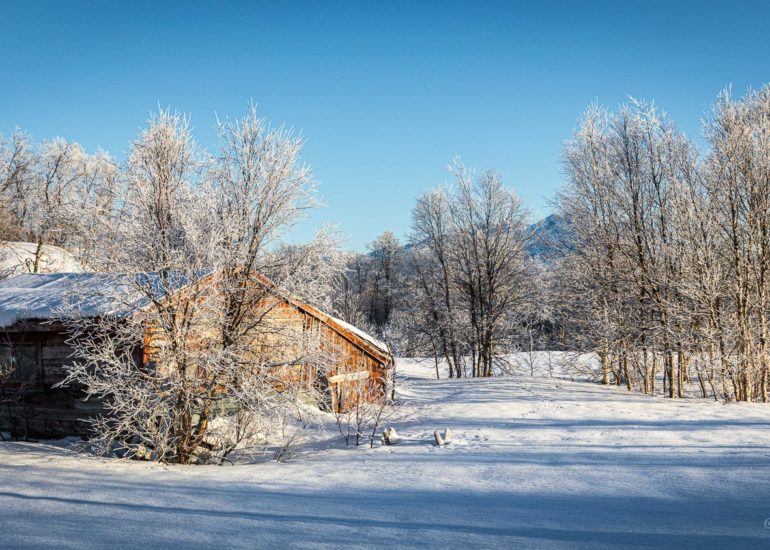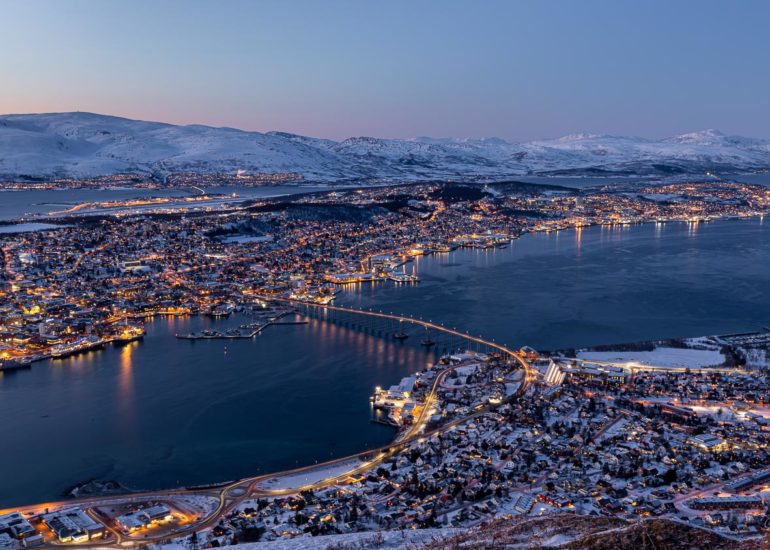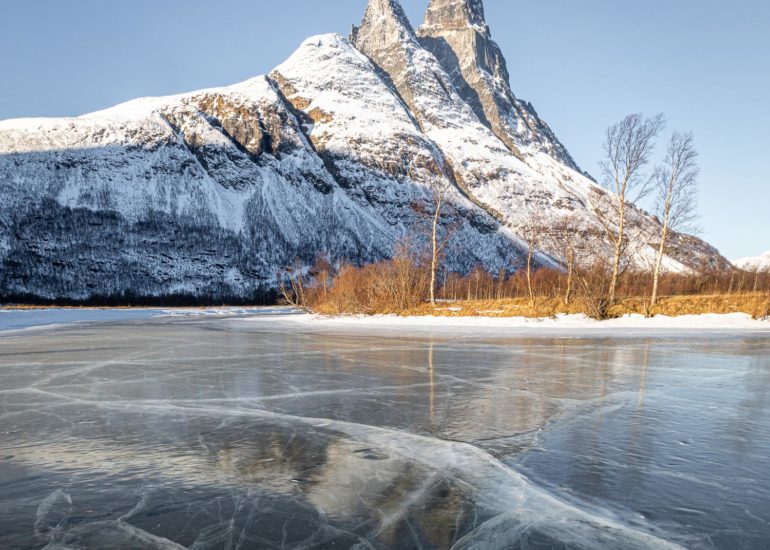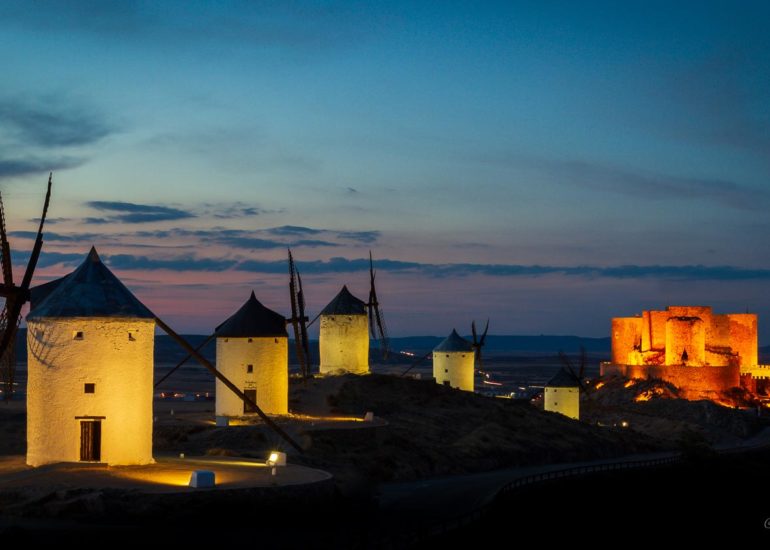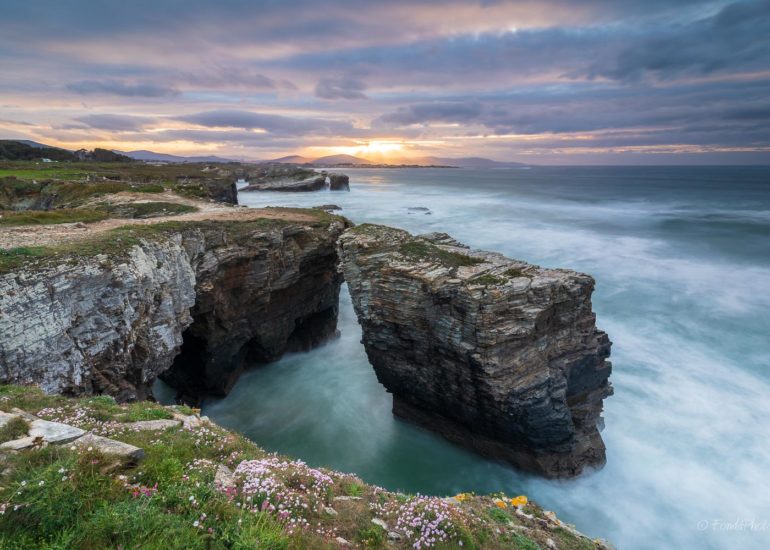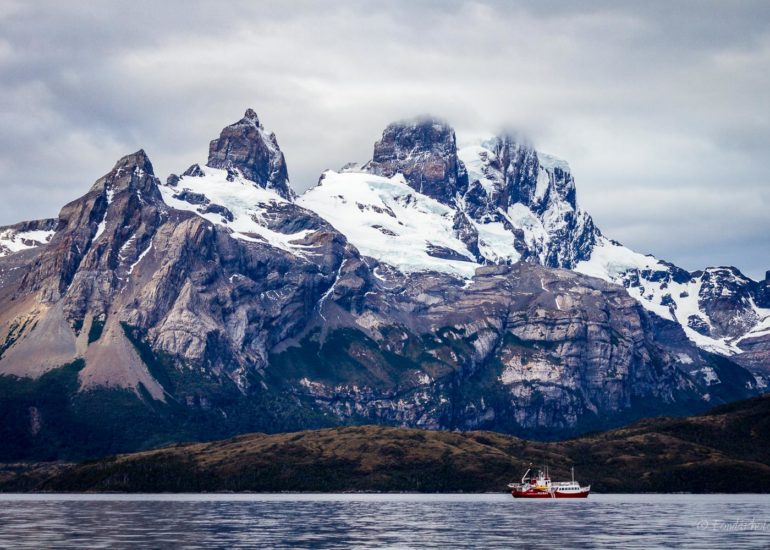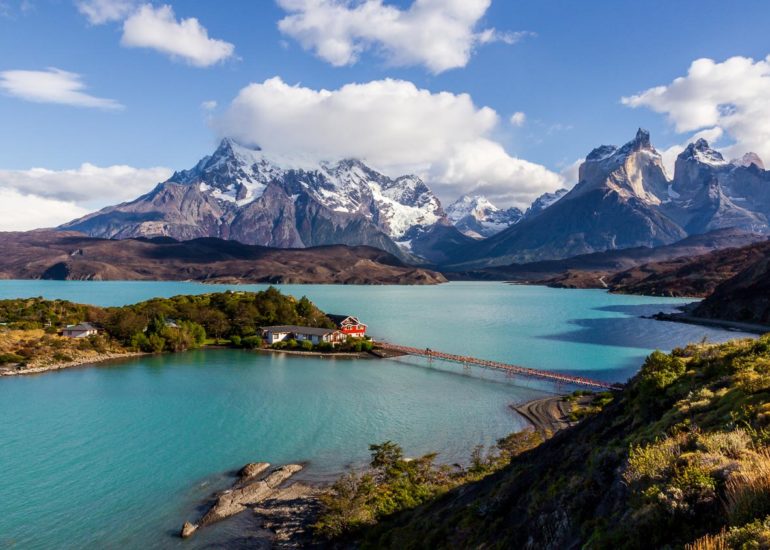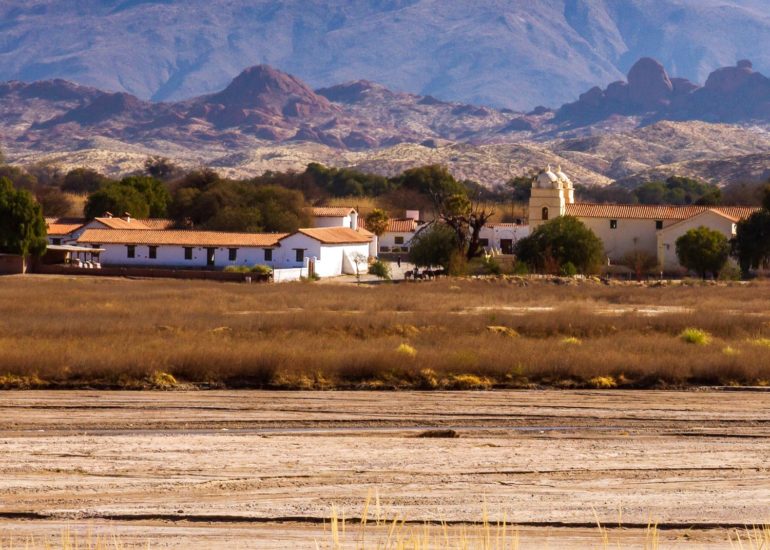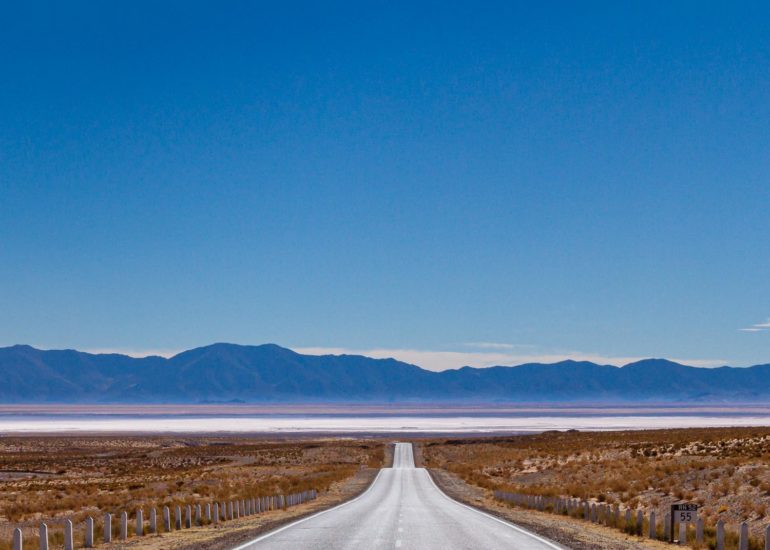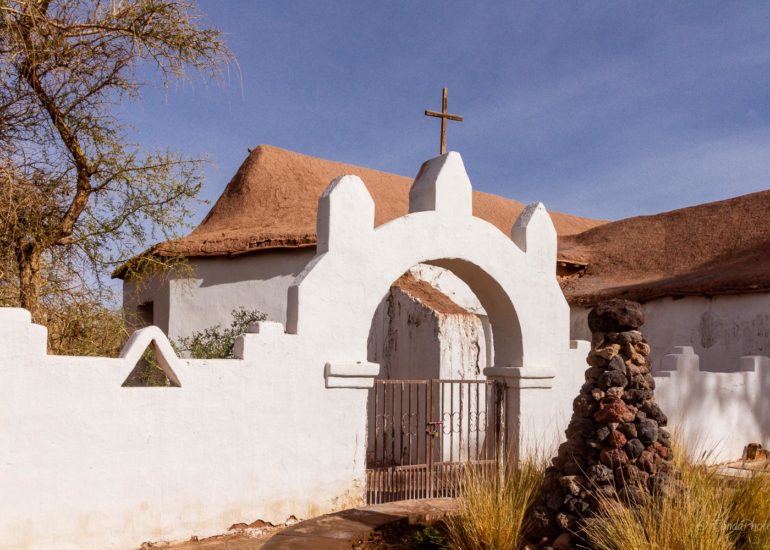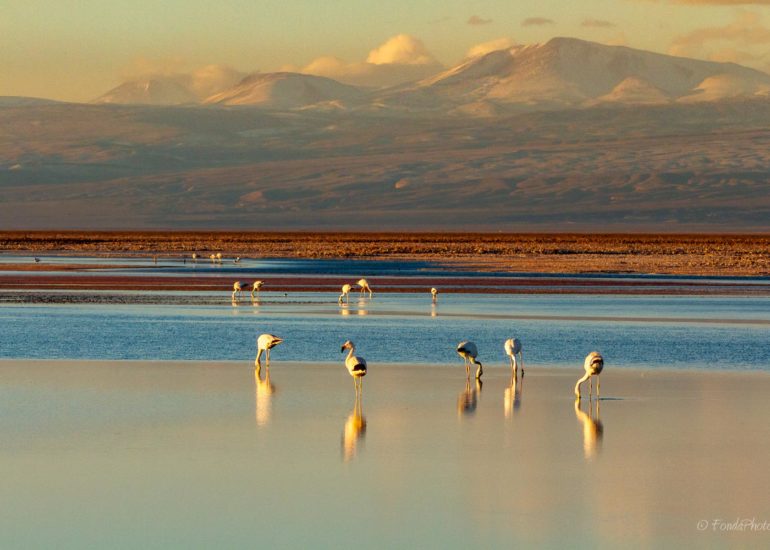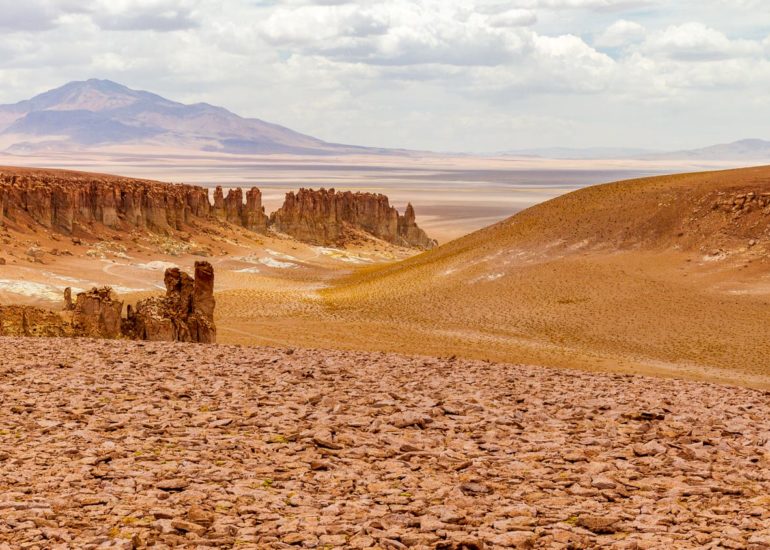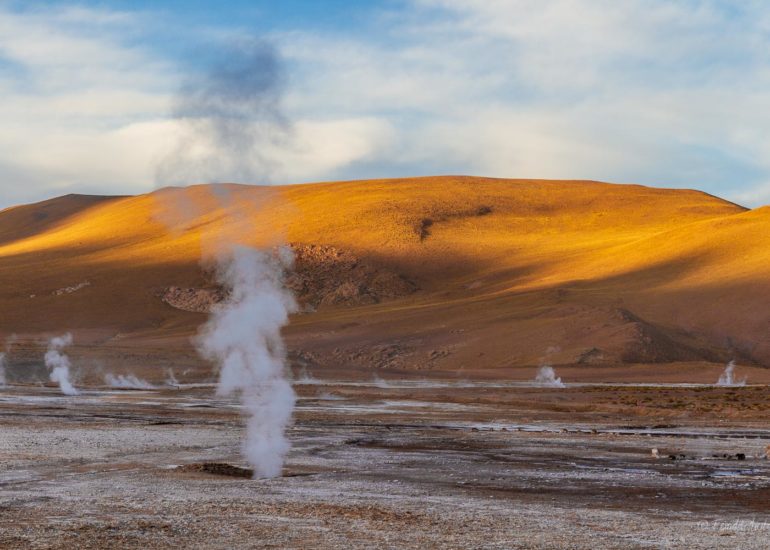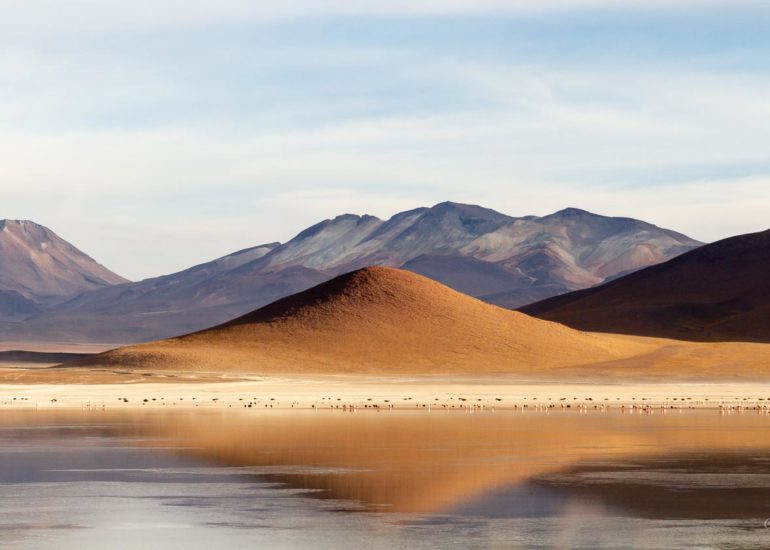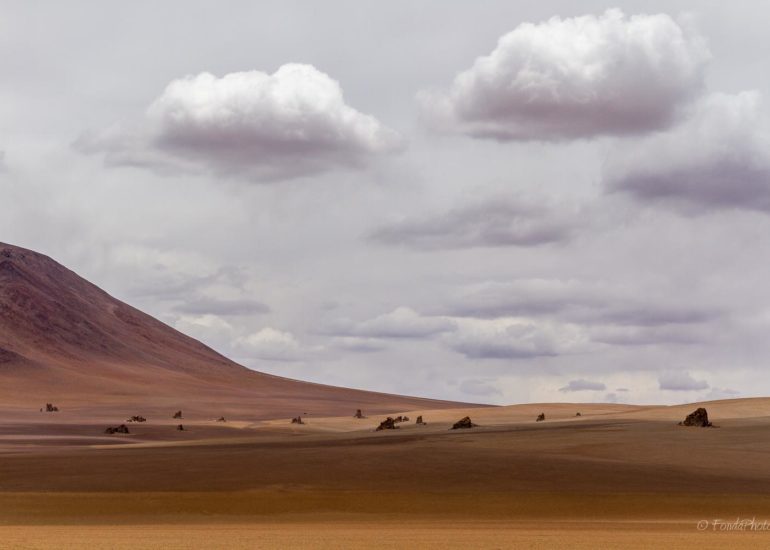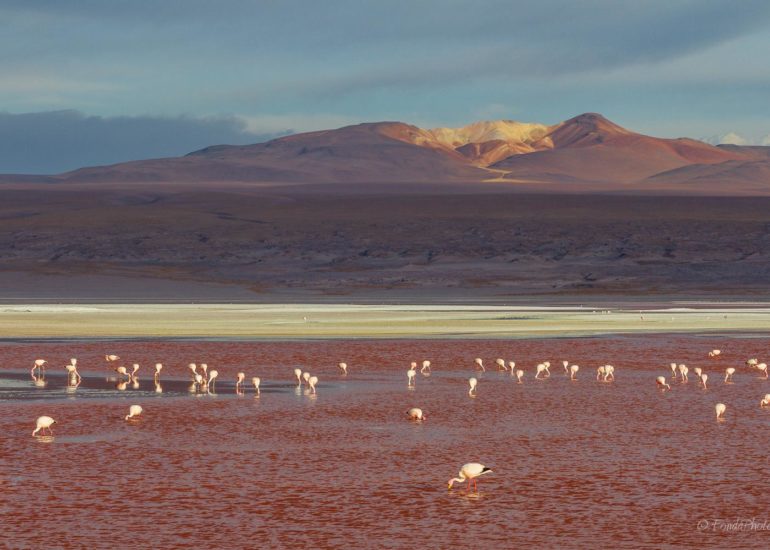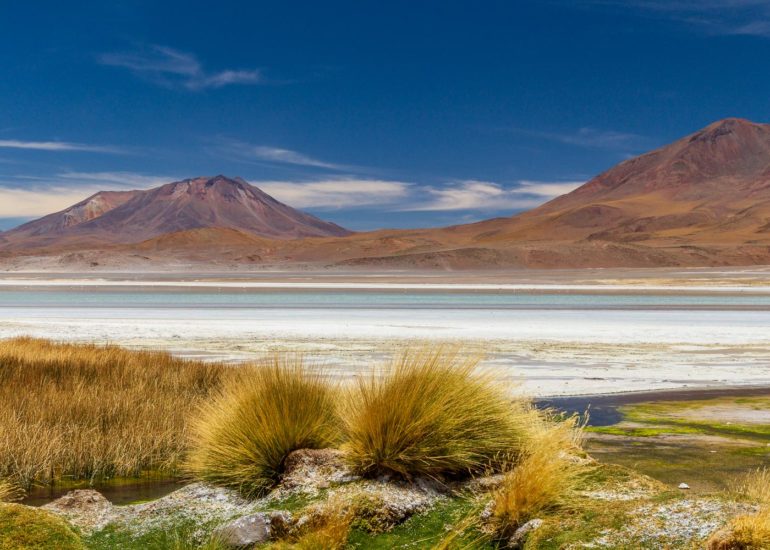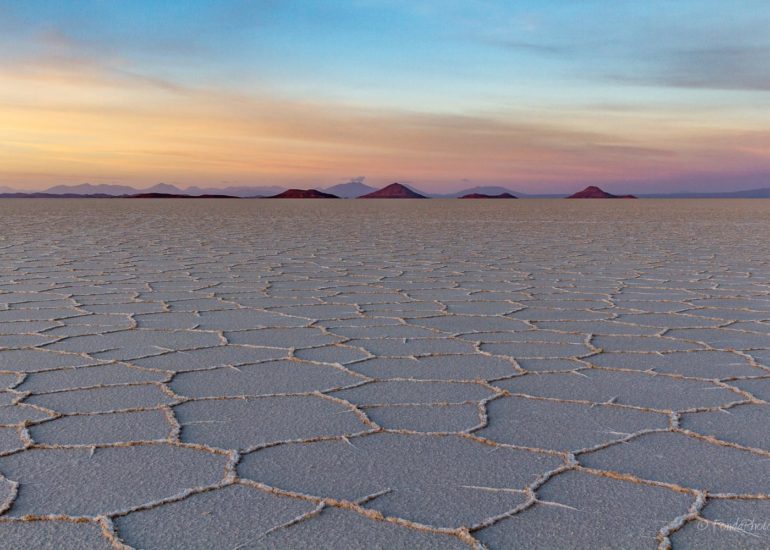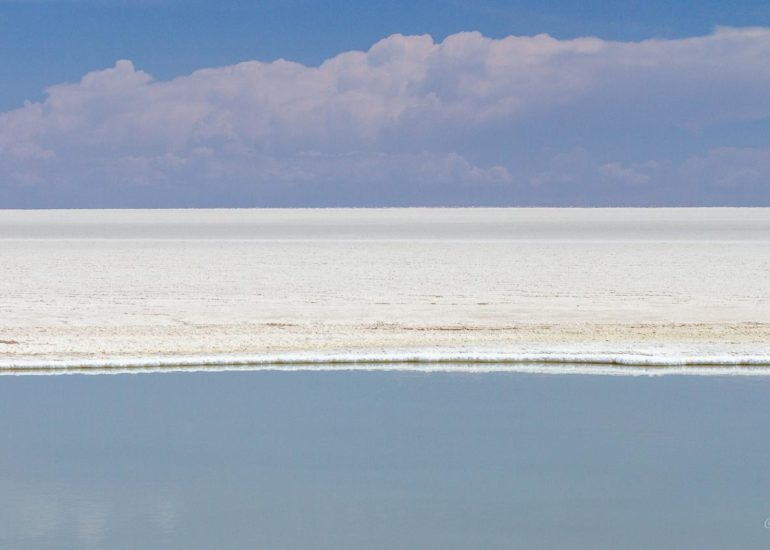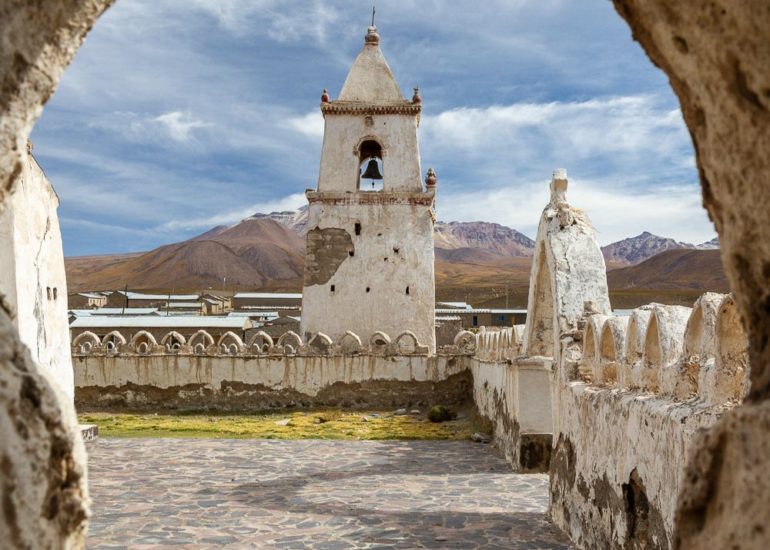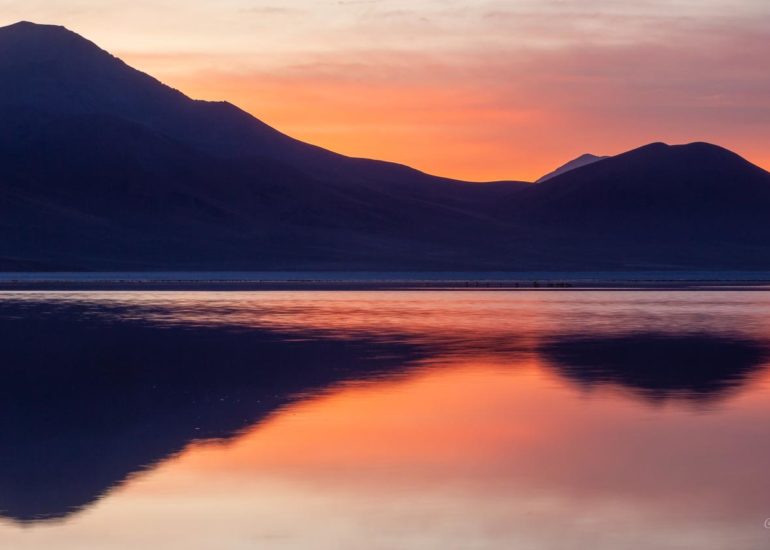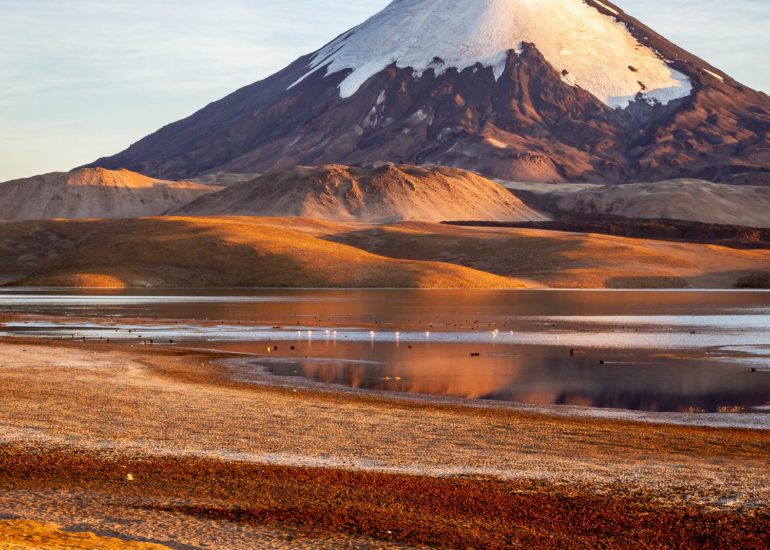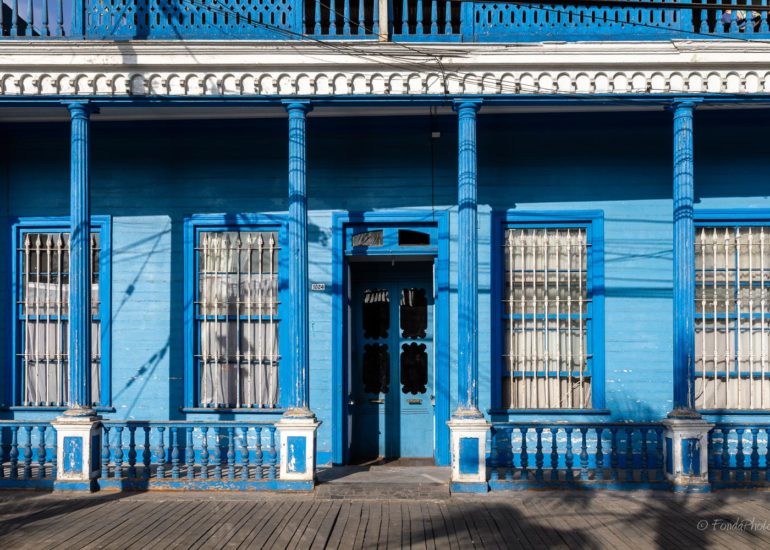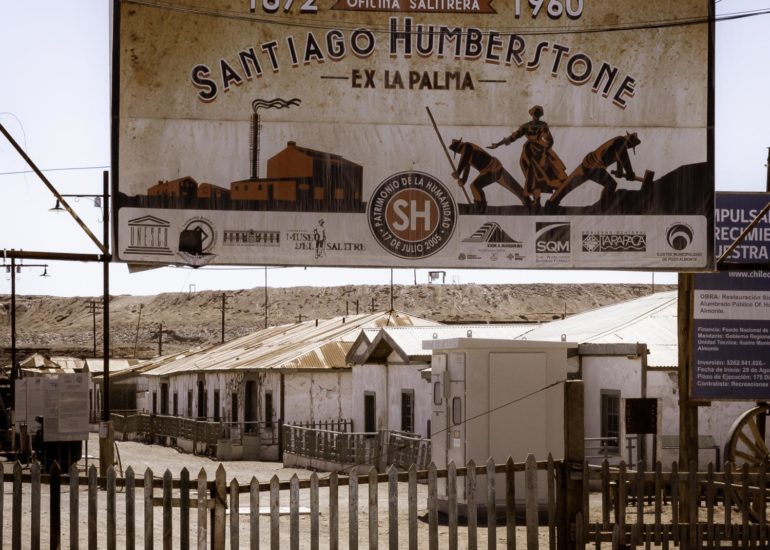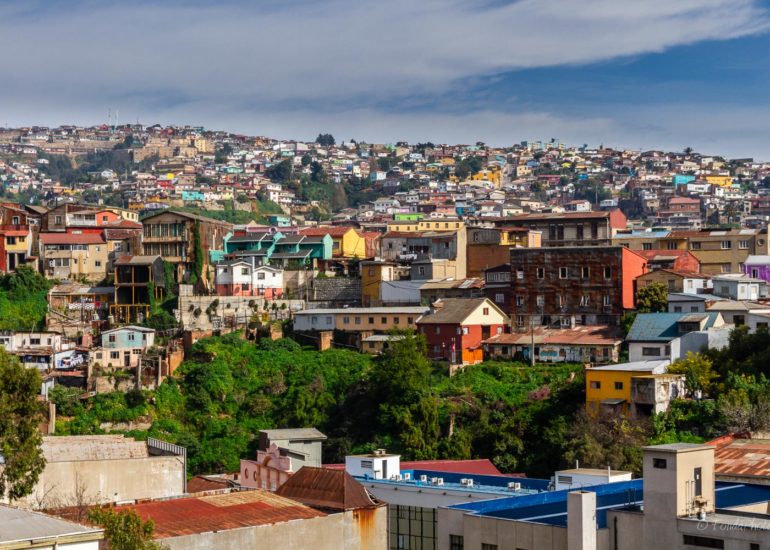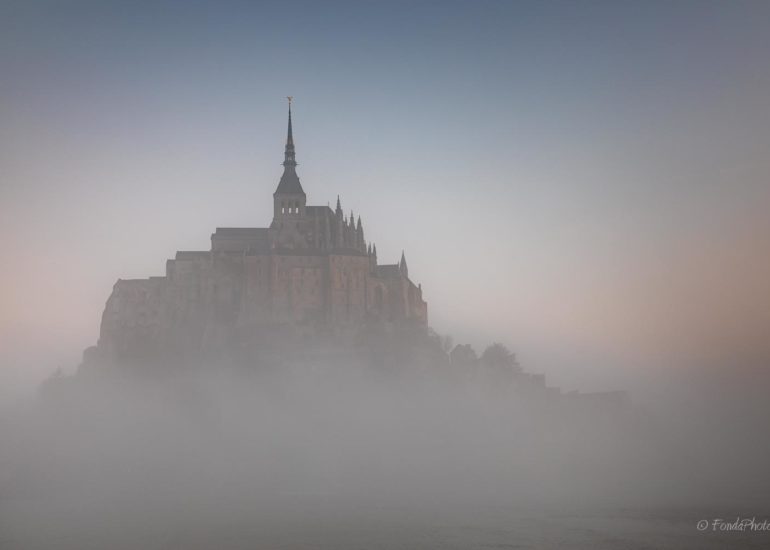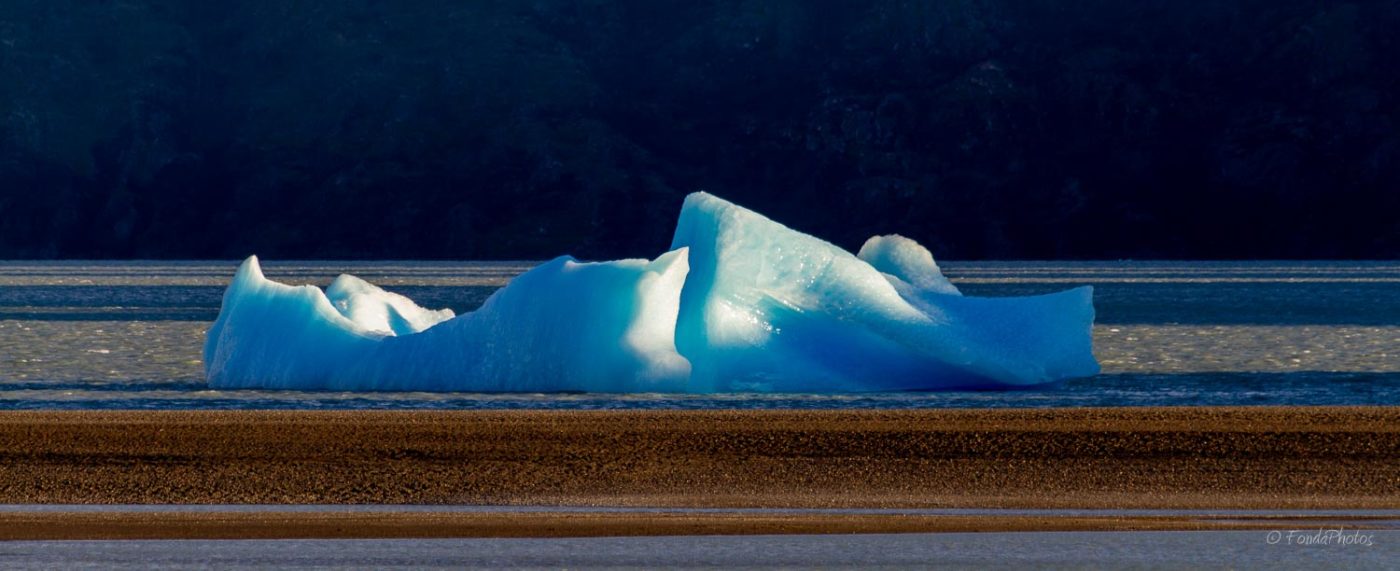
Torres del Paine
Definitely among the finest national parks in South America, Torres del Paine encompasses mountains, glaciers, lakes, and rivers in southern Chilean Patagonia. The landscape of the park is dominated by the Paine massif, which is an eastern spur of the Andes located on the east side of the Grey Glacier, rising dramatically above the Patagonian steppe.
Getting there at night
We visited the park immediately after our cruise on the Strait of Magellan. On March 2, 2012 we disembarked M/V Forrest early afternoon, much later than anticipated. By the time we reached Punta Arenas, picked-up our 4WD vehicle and left Punta Arenas it was already late afternoon. The ride to Puerto Natales across the steppe was very pleasant, with good weather. We arrived at Puerto Natales just in time for dinner. According to our initial optimistic plans, we should have been at the hotel in the park already! After a long discussion during dinner, we finally decided to hit the road, or rather the bumpy track, and cover a distance of 90 km .
More than seven years later, as I am writing these lines, I can still remember this ride very well. We passed by the Mylodon Cave, an ancient dinosaur, and after a few miles, the track surface became very uneven. It was pitch dark and I could not drive fast, so I had to go very slowly, mostly worried to break a wheel and have to spend the rest of the night in the car. It took us forever to get to the hotel next to Lago Grey. We were navigating using a small map from Guide du Routard but luckily I was carrying a Garmin GPS which does not require any cellular network. We took the wrong direction once, turned around after 5 miles or so but finally reached Lago Grey just before 3am. The key was on the door, we emptied the car trunk and immediately collapsed. But it was worth it, what a show the next morning!
Fifth most beautiful place in the world but increased tourist pressure
The park had over 140,000 visitors per year when we visited it in 2012, unfortunately that number has almost doubled by now (2019). It is a (too) popular hiking destination in Chile. Hikers can opt for a day trip to see the towers, walk the popular W Route in about five days, or trek the full circle in 8 to 9 days. Visiting the park is recommended between late December and late February, during the southern summer. Not only the weather conditions are the best, but daylight hours are very long given the extreme southern latitude. Outside of this time frame, the weather becomes too extreme for the majority of the public. During the southern winter, daylight dwindles to only a few hours a day.
Torres del Paine has been elected as the fifth most beautiful place in the world by the National Geographic.
Lago Grey
Our hotel was located at the southern tip of this 15 km long lake. The view towards Glacier Grey, on the opposite side to the north, is spectacular! Photos have been shot over two days, under very different light conditions. Lens compression effect is really impressive!
Lago Pehoé



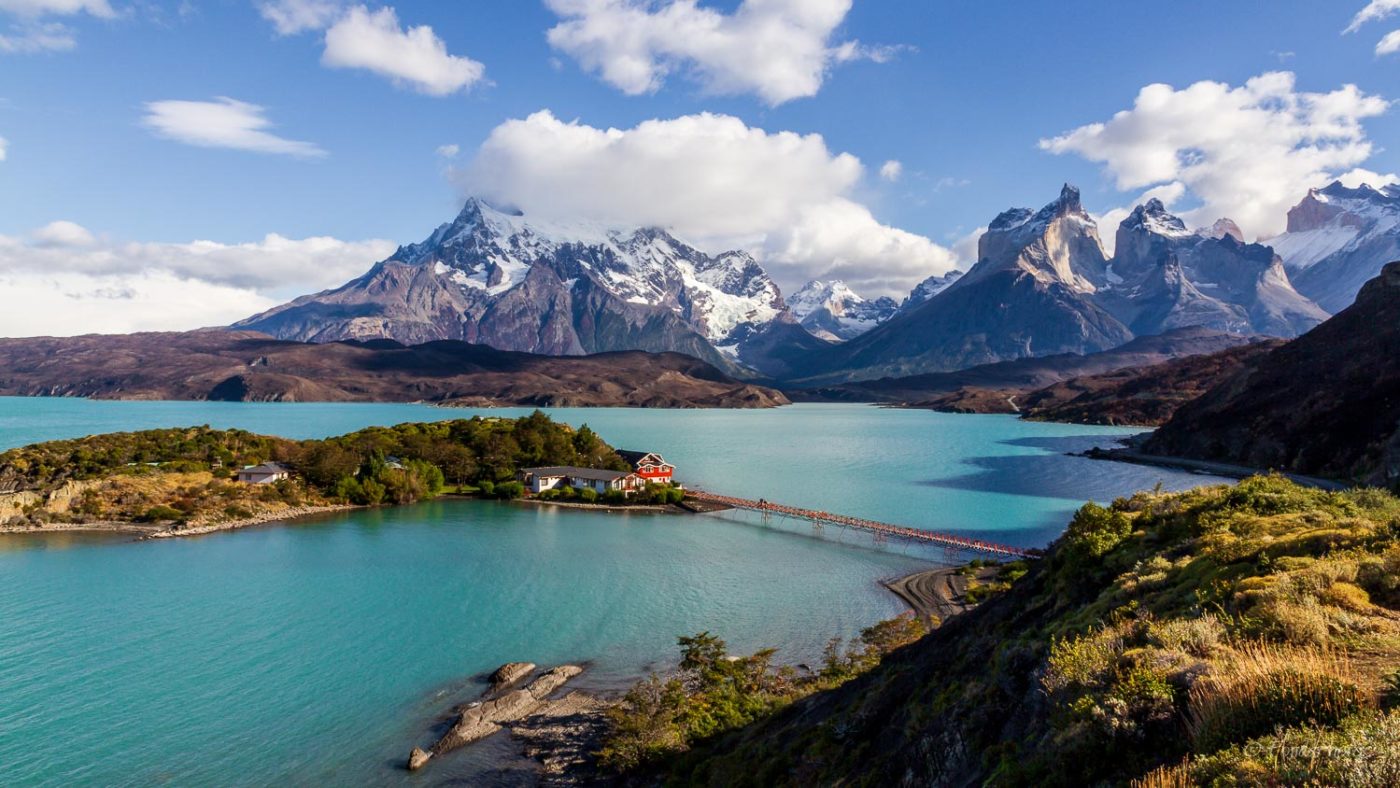
Cuernos and Torres
The three summits of the Paine massif are very characteristic and their peculiar horn shape has given them the name of Cuernos del Paine. They are visible from almost every location in the park.
The massif also includes the three famous granitic peaks or towers from which the name of the park derives.


